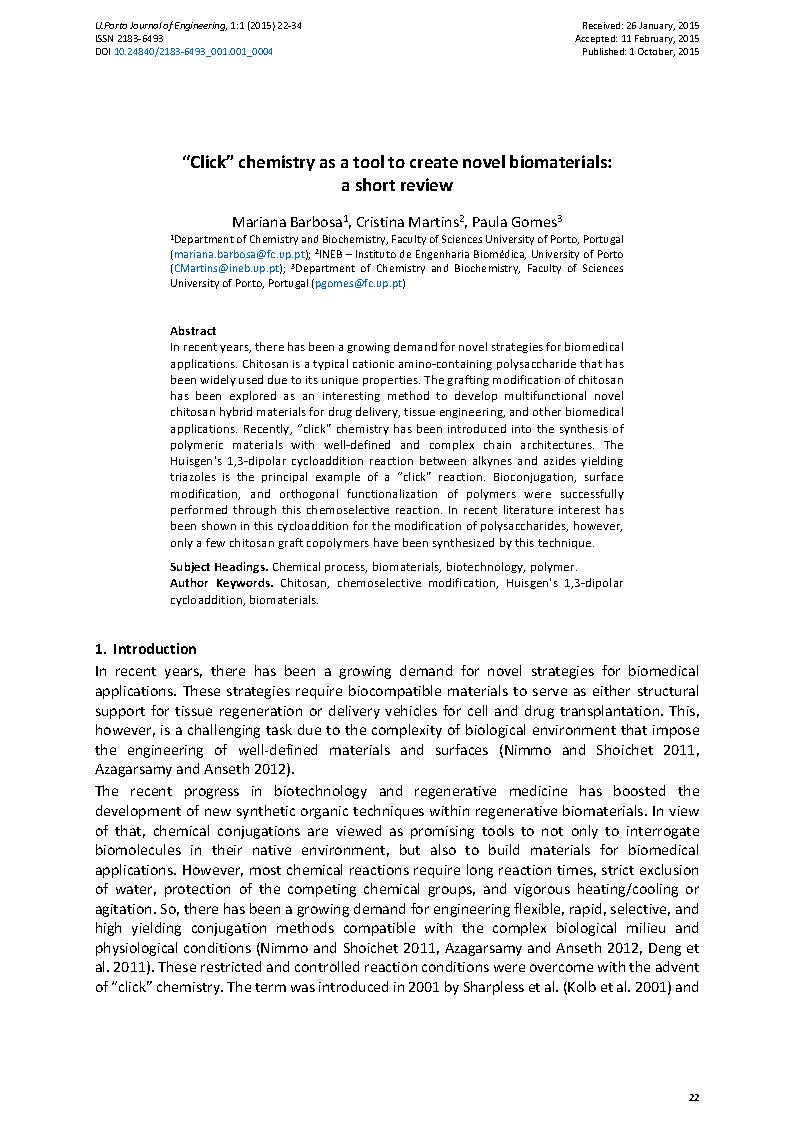"Click" chemistry as a tool to create novel biomaterials: a short review
Main Article Content
Abstract
In recent years, there has been a growing demand for novel strategies for biomedical applications. Chitosan is a typical cationic amino-containing polysaccharide that has been widely used due to its unique properties. The grafting modification of chitosan has been explored as an interesting method to develop multifunctional novel chitosan hybrid materials for drug delivery, tissue engineering, and other biomedical applications. Recently, “click” chemistry has been introduced into the synthesis of polymeric materials with well-defined and complex chain architectures. The Huisgen’s 1,3-dipolar cycloaddition reaction between alkynes and azides yielding triazoles is the principal example of a “click” reaction. Bioconjugation, surface modification, and orthogonal functionalization of polymers were successfully performed through this chemoselective reaction. In recent literature interest has been shown in this cycloaddition for the modification of polysaccharides, however, only a few chitosan graft copolymers have been synthesized by this technique.
Downloads
Article Details
Authors who publish with this journal agree to the following terms:
- Authors retain copyright and grant the journal right of first publication with the work simultaneously licensed under a Creative Commons Attribution License that allows others to share the work with an acknowledgement of the work's authorship and initial publication in this journal.
- Authors grant the journal the rights to provide the article in all forms and media so the article can be used on the latest technology even after publication and ensure its long-term preservation.
- Authors are able to enter into separate, additional contractual arrangements for the non-exclusive distribution of the journal's published version of the work (e.g., post it to an institutional repository or publish it in a book), with an acknowledgement of its initial publication in this journal.
- Authors are permitted and encouraged to post their work online (e.g., in institutional repositories or on their website) prior to and during the submission process, as it can lead to productive exchanges, as well as earlier and greater citation of published work (See The Effect of Open Access).

